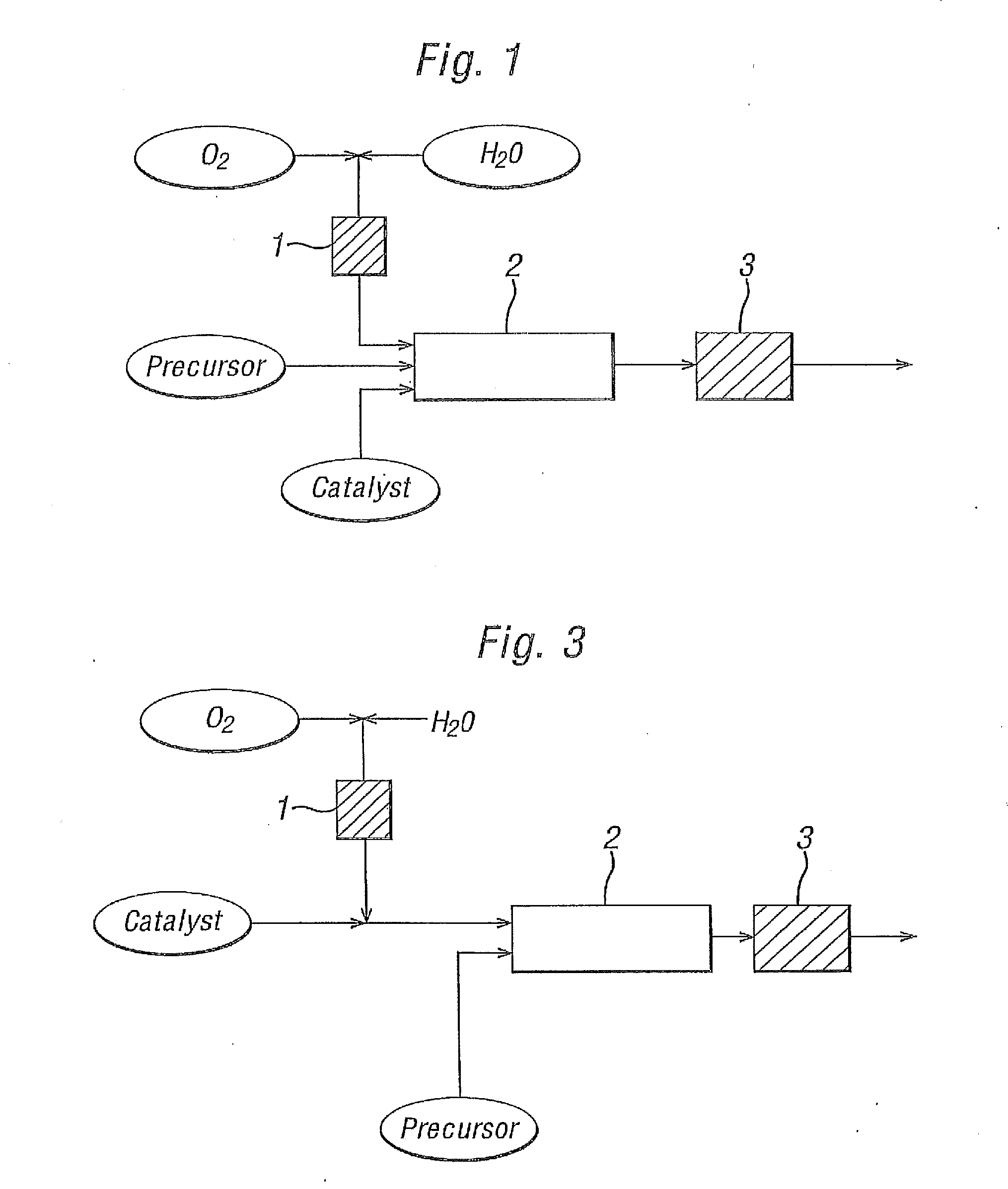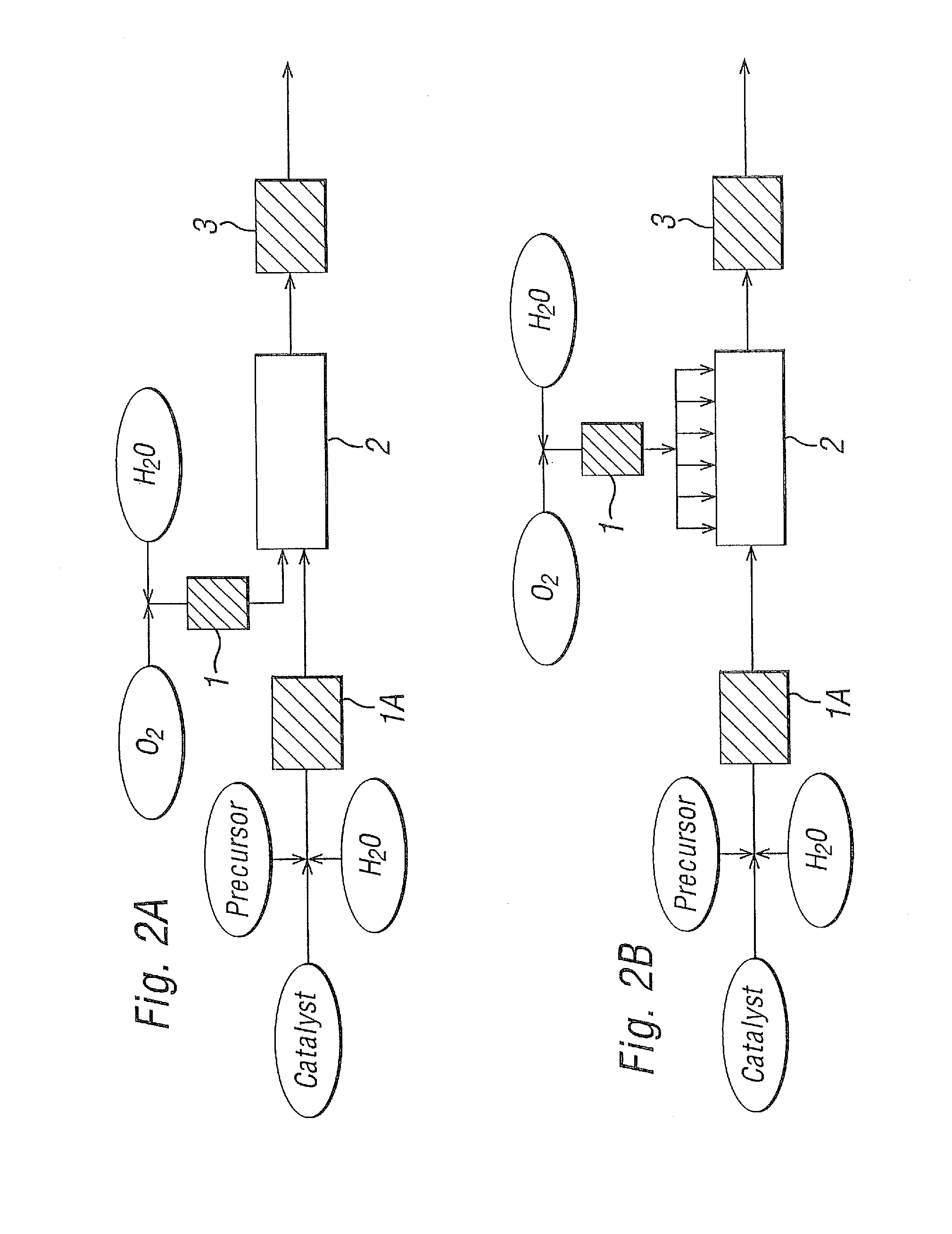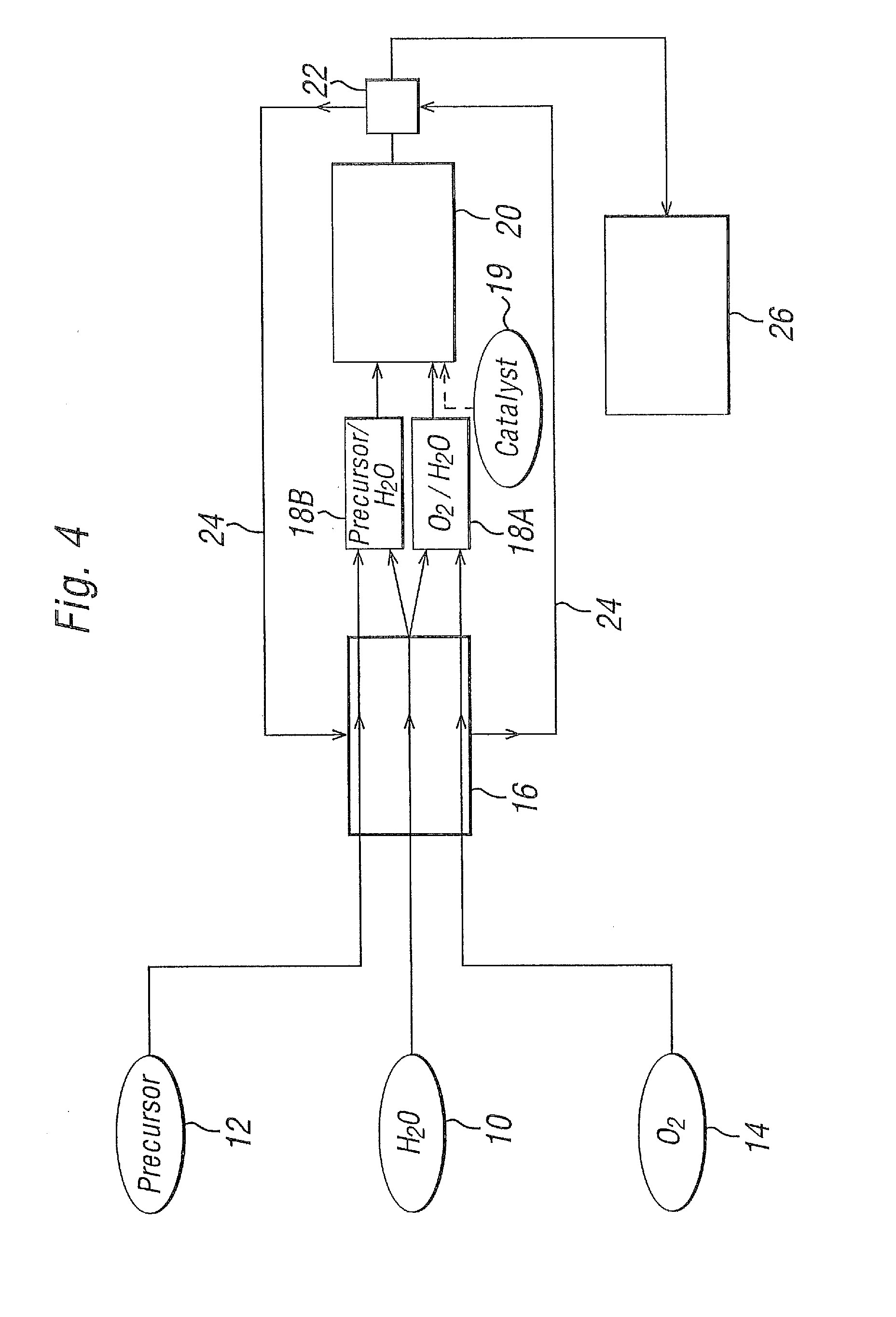Catalytic oxidation reactions in supercritical or near-supercritical water for the production of an aromatic carboxylic acid
a catalytic oxidation and aromatic carboxylic acid technology, applied in the preparation of carboxylic compounds, bulk chemical production, organic chemistry, etc., can solve the disadvantages of fe(ii) and ni(ii) salts, severe charring, disadvantages of aromatic carboxylic acid production, etc., to reduce the tendency of the reactor to be fouled, reduce burn, and improve the selectivity and/or yield of the target compound
- Summary
- Abstract
- Description
- Claims
- Application Information
AI Technical Summary
Benefits of technology
Problems solved by technology
Method used
Image
Examples
examples
[0078]Experimental work was carried out on a laboratory scale by the continuous oxidation of alkylaromatics by O2 in near critical or supercritical water at about 330-380° C. and 230 to 250 bara with a catalyst solution (as detailed below). The exotherm was minimised by using relatively dilute solutions (0.4%-2.0% organic w / w). The basic configuration of the system is as set out in FIG. 1. A more detailed illustration of the system used in these laboratory scale experiments is shown in FIG. 10.
[0079]O2 originates from heating an H2O2 / H2O mixture in excess of 400° C. in the preheater 152. The H2O2 decomposes to liberate O2. The O2 / H2O fluid then passes through the cross-piece 154, where it is contacted with the alkylaromatic and catalyst solution, fed in from their own pumps. The reaction mixture is passed through the reactor 156. At the end of the reactor, the reaction is quenched by caustic solution added with a pump. Sufficient caustic is used to attain a pH of >12 in the discharg...
examples 1-22
[0086]Experiments were conducted using the following experimental conditions:
[0087]Temperature=approx. 380° C.; Pressure=approx. 230 bara
[0088]Flow rate of catalyst=4.0 mL / min.
[0089]Flow rate of p-xylene=0.061 mL / min
[0090]Flow rate oxidant (H2O2 in H2O)=8.1 mL / min. (providing an amount of [O2] as aqueous H2O2 of 0.276 mol.L−1 (1.5 molar equivalents of the stoichiometry required for complete oxidation of the organic precursor to the aromatic acid, the molar ratio for which in the case of p-xylene is 3O2 / organic)).
Analysis of the Data
[0091]The data are presented in Tables 1-4. The data in table 1 demonstrate the surprising superiority of copper-based catalysts in super-critical water oxidation reactions when compared with the conventional manganese or cobalt-based catalysts, in terms of both yield and selectivity.
[0092]The data in table 2 demonstrate the improved yields and selectivities when copper and cobalt are combined as catalysts, which at certain metal ratios exhibit lower burn...
examples 23-28
[0095]Experimental conditions were the same as in Examples 1-22 except that:
[0096]Flow rate of p-xylene=0.28 mL / min
[0097]Pressure=approx. 250 bara
[0098]Flow rate oxidant (H2O2 in H2O)=8.1 mL / min. (providing an amount of [O2] as aqueous H2O2 of 1.26 mol.L−1 (1.5 molar equivalents of the stoichiometry required for complete oxidation of the organic precursor to the aromatic acid, the molar ratio for which in the case of p-xylene is 3O2 / organic)).
[0099]The data in Table 5 demonstrate that increase in catalyst concentration increases yield of terephthalic acid and reduces burn to carbon dioxide. It also further demonstrates the increased activity and reduced burn achieved with a copper-cobalt catalyst.
PUM
| Property | Measurement | Unit |
|---|---|---|
| operating temperature | aaaaa | aaaaa |
| temperature | aaaaa | aaaaa |
| temperatures | aaaaa | aaaaa |
Abstract
Description
Claims
Application Information
 Login to View More
Login to View More - R&D
- Intellectual Property
- Life Sciences
- Materials
- Tech Scout
- Unparalleled Data Quality
- Higher Quality Content
- 60% Fewer Hallucinations
Browse by: Latest US Patents, China's latest patents, Technical Efficacy Thesaurus, Application Domain, Technology Topic, Popular Technical Reports.
© 2025 PatSnap. All rights reserved.Legal|Privacy policy|Modern Slavery Act Transparency Statement|Sitemap|About US| Contact US: help@patsnap.com



